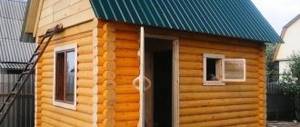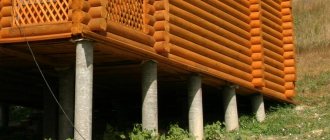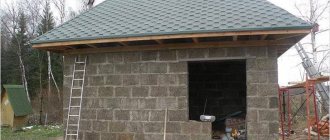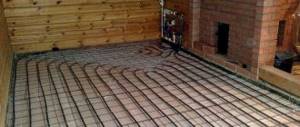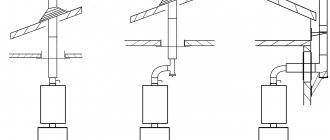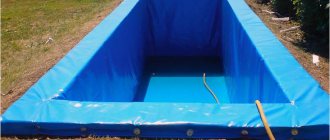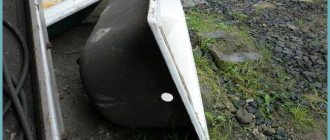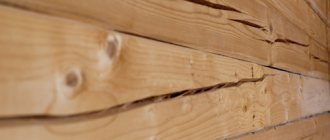If you neglect to insulate the room under the roof of the house, or do it incorrectly, you will not end up in trouble. The cold wind in winter will blow into the cracks, and moisture will accumulate in the form of condensation on the rafters and ceiling. As a result, the tree will begin to mold and rot. You will also have to heat it harder, because the heat will partially escape through the roof. Therefore, it is better to foresee everything in advance, having learned how to properly insulate an attic and not make mistakes in the process. So, read on.
In this article: [Hide]
- What material is better to use
- Thermal insulation of the attic in stages We create a continuous insulated contour
- We protect the insulation from wind, rain and fumes
Roofing pie device
The attic roof has several functional layers. The types of roofs with their structures vary in degree of complexity.
Collectively, the layers of the attic roof are called a roofing pie (another way to insulate an attic roof).
There are 2 types of attic: used and cold. The roof structure is selected taking into account the choice of attic structure.
In the case of a cold attic layout, only the ceiling is insulated.
If you plan to have an attic, you will need to insulate the roof.
It is in this case that a roofing pie is created.
The pie consists of:
- interior decoration,
- lathing,
- vapor barrier layer,
- counter battens,
- insulation,
- waterproofing,
- ventilation gap,
- roofing material.
Carefully! It is very important to maintain the correct chain of layers, since each of the elements performs its own specific function. If the order of layers is incorrect, the thermal insulation characteristics of the roof will be impaired, which will lead to damage to the building material. We recommend that you familiarize yourself with the detailed diagram of roof insulation with your own hands.
What does proper thermal insulation consist of?
Correctly done insulation of the walls of the attic floor should consist of several layers (in order):
- Windproof vapor barrier. It is fixed under the roofing above the rafters using slats.
- Counter-lattice. It is necessary to create a ventilated space between the roof and waterproofing and remove condensate accumulating there.
- Waterproofing that prevents the insulation from getting wet, in order to avoid loss of its thermal insulation properties.
- Insulation. The material is fixed between the rafters and is the main element of the “constructive cake”. It is necessary to leave a ventilation gap between it and the waterproofing film.
- Lathing. The slats placed across the rafters hold the insulation and serve as the basis for attaching the vapor barrier.
- Vapor barrier. The membrane film is fixed overlapping with a gap of 10-15 cm. All sections are fastened together with adhesive tape to form a solid coating without gaps.
- Interior finishing – plasterboard, OSB, GVL, etc.
Insulation device diagram
How to properly insulate an attic from the inside
The photo shows an insulated attic:
If the roof is already covered, insulation of the attic from the inside can be carried out at any time of the year and day. The disadvantage is the presence of hard-to-reach places that must be processed.
Waterproofing
The roof must be protected from moisture: atmospheric influences, condensation, steam, fumes. Waterproofing must be of high quality - the service life of the entire roof depends on it.
The material should be laid directly under the outer layer of roofing, leaving a gap between them for air circulation.
Waterproofing must meet two requirements: prevent moisture from entering the building and serve for a long time.
Ordinary polyethylene film is not suitable - it promotes condensation and is not durable. It is better to use perforated film or “breathable” membranes. Rolls should be overlapped and glued into a single whole.
Vapor barrier
There is moist warm steam in the living room. To prevent it from penetrating into the insulation layer, a vapor barrier material is used. It isolates cold and warm air from each other. If you do not use a vapor barrier, the condensation will wet everything and it will lose its insulating properties.
A vapor barrier sheet is applied to the material from the side of the warm living room. It is important to combine it into a single whole.
Thermal insulation
When insulating an attic from the inside, thermal insulation is necessary to retain heat in the room. It depends on the thermal conductivity of the material used. The lower the thermal conductivity, the better the material retains heat. Thermal conductivity depends on density and the presence of air bubbles.
Thermal insulation of the attic requires the use of vapor-conducting materials. In addition, the material must be elastic and dense and retain its shape when cut.
To achieve the goal (heat preservation), the thickness of the layer must be maintained. The greater the thermal conductivity, the larger the layer required.
General requirements for the thermal insulation system
For thermal insulation to work effectively, the following is necessary:
- The insulation must cover all surfaces without gaps, as a continuous “carpet”.
- Thermal insulation material is protected from condensation that forms under the roof as a result of the interaction of warm, moist air from the inside and cold air from the outside.
- The resulting condensate must be removed through ventilation ducts.
- The insulation must be equipped with a windproof layer that protects it from blowing out heat.
- The selected material must comply with all sanitary and construction standards.
Proper insulation of the attic
Selection of required materials
There are a lot of insulation materials. However, not all of them are recommended for installation in a residential attic. The attic space is characterized by fairly high humidity due to the rise of heated air from the lower floors of the cottage. Plus, the environmental friendliness and safety of the material should also not be forgotten.
If the attic is uninhabited, then due to natural ventilation through vents, soffits and dormers, steam quickly evaporates from it to the street. As a result, condensation does not form inside, and the rafter system is not negatively affected by excess moisture.
In the attic the situation is different. When insulating it, you have to create a barrier for heat to escape outside and reduce air exchange with the street. As a result, all the steam remains inside the attic rooms.
Therefore, if the insulation is not reliably protected from moisture, it will not last long. After all, any thermal insulation material, after getting wet, partially or completely loses its properties.
To insulate the attic from the inside, it is recommended to use stone mineral wool or penoplex. Other options are of little use for this type of work.
When choosing insulation, you need to evaluate it:
- thermal conductivity;
- vapor permeability;
- volume weight;
- flammability;
- sound insulation;
- environmental safety.
If you choose too heavy a material, the rafters will be overloaded. And the attic is often equipped from an uninhabited attic. Rafter beams, in this case, are not designed for unnecessary additional loads. You shouldn't tempt fate here.
In terms of thermal conductivity, most insulation products on the market are similar. You just need to choose the right thickness to achieve the required thermal insulation parameters.
It is not recommended to use sprayed polyurethane or foil polyethylene to insulate the attic from the inside due to the high risk of condensation directly on the wooden rafters if the slightest mistakes are made during installation
Of the entire range of thermal insulation materials, the most suitable for internal insulation of attics are mineral wool (basalt) and extruded polystyrene foam. Moreover, the first option is more preferable than the second. Mineral wool is not flammable and has better sound insulation.
You should not use glass wool because of its susceptibility to crumbling. Small glass particles are very dangerous for humans. And ordinary polystyrene foam is also not recommended for use in the attic. Compared to EPS, it is more flammable and environmentally harmful. In addition, it will have to be laid in a thicker layer.
Extruded polystyrene foam
Extruded polystyrene foam is better known to modern builders as penoplex. It was invented in the middle of the last century and since then has been successfully used to insulate roofs, walls and floors in residential premises. Its production is somewhat reminiscent of the production of foam plastic, but differs in the high-temperature effect on the raw materials. The resulting material has high density and corresponding strength. An excellent indicator of strength - Styrex is used for thermal insulation of runways at airports.
Penoplex sheets are made with a chamfer along the edge, this allows you to insulate surfaces without joints or gaps
Mineral wool
Mineral wool is one of the most popular heat and sound insulation materials. It is successfully used to insulate roofs and attics, floors and walls. This insulation can be used inside and outside the building. It can withstand temperatures up to plus 690 degrees and can be used to protect hot pipelines.
The term “mineral wool” can mean stone wool, glass wool and slag wool. Mineral wool comes in different densities, depending on the brand and manufacturer. For thermal insulation of the attic, it is better to select mineral wool with vertically arranged fibers.
There are types of tepid ones with randomly located fibers, this option is characterized by increased strength
Glass wool
One of the varieties of mineral wool, glass wool, has long been successfully used as roof insulation. It is produced from broken glass containers and other crystalline production waste.
Fiberglass insulation has proven itself well in insulating a sloping roof from the inside. Due to its durable structure, glass wool compares favorably with other types of mineral wool. Its fibers are almost three times longer than the fibers of ordinary mineral wool.
Glass wool is easy to install and cut, is relatively inexpensive and can be used for internal and external insulation
You need to work with this material very carefully, using personal protective equipment. The finest fibers upon contact with the skin and mucous membranes cause severe irritation.
Stone wool
Stone, or basalt, wool is a heat insulator based on natural mountain material. This insulation is not cheap, but it compares favorably with others due to its long service life and excellent performance characteristics.
The production process of basalt wool involves high-temperature exposure up to 1500 thousand degrees. Modern production uses phenol-formaldehyde to bind particles into compositions based on phenol-formaldehyde.
Stone wool is a high-quality material for insulation
Styrofoam
Foam plastic is a foamed polymer material. It is very light, since its main contents are air bubbles. They act as a heat insulator. Polystyrene foam can be pressed or unpressed. It’s not difficult to figure out what type of material is in front of you - unpressed polystyrene foam looks like a honeycomb, it crumbles effortlessly. This material is mainly used for the manufacture of shockproof packaging. Pressed foam plastic is denser - it cuts well and does not crumble into crumbs.
For insulation, you can use both types. Foam boards are easily attached to the rafters using self-tapping screws or glue. The surface of the slabs can be plastered. For the attic, slabs 7 centimeters thick are used.
When using polystyrene foam, it is important to provide subsequent high-quality ventilation of the room
Ecowool
This is a relatively new type of insulation that has not yet gained such popularity as polystyrene foam or mineral wool. It differs from other thermal insulation products in that it is not produced in layers or rolls. Ecowool is a loose substance in which the fibers adhere only due to electrostatics.
Ecowool consists of cellulose and is produced from waste. Its advantage is that the bulk composition fills all the cracks and holes well. Its thermal insulation qualities are the same as those of mineral wool.
The natural composition of this insulation is a favorable environment for the development of microorganisms and mold; insects and rodents feel great in it. To give the insulation fire-fighting properties, cellulose is treated with fire retardants.
Ecowool is applied by spraying
Polyurethane foam
Polyurethane foam is a type of plastic characterized by a foamy composition. The practice of using polyurethane foam was brought to us by the Germans. This insulator can be used to insulate houses made of concrete and brick. It is applied by spraying and adheres firmly to any surface.
While it is difficult to say what the maximum service life of this insulation is, the history of its use is still very short. We have been using polyurethane foam sponges for a very long time, but as insulation – relatively recently.
It is known that this composition insulates noise well and is not inferior in its thermal insulation qualities to polystyrene foam.
Penofol
Penofol is a thin polymer heat insulator consisting of foam and aluminum foil. The reflectivity of this material is excellent - up to 97 percent. This heat insulator does not allow water and air to pass through, and reflects heat flows back into the room. The operation of such material is similar to the action of a thermos. The thickness of the coating is from 3 millimeters to 4 centimeters.
Experts recommend combining penofol with other heat insulators, including using it for waterproofing
How to choose insulation
Choosing suitable insulation is an important stage in arranging a living space on the attic floor.
There are several important factors to consider:
- Taking into account climatic conditions. If severe frosts rage in the region during the cold season, you need to choose cellular or porous insulation. Its structure allows warm air to fill empty spaces and keep the room warm. This works like PVC profiles and double glazing on windows. The more layers of cells, the better the material, so the layer thickness should be more than 1-2 cm.
- For regions with high humidity, the hydrophobicity of the material comes first. All types of cotton wool are undesirable here, but derivatives of polyethylene and plastic will be just right. You can safely use polystyrene foam and polyurethane foam.
- When there is a large amount of precipitation in winter, which puts a load on the roof, lightweight materials are preferred. For example, foam and foil.
- Accounting for moisture and fire resistance indicators. Even if the climate is not full of rain, protecting the insulation from moisture is very important. Wet material ceases to perform its functions, as its thermal conductivity changes, and gains weight.
- As for fire safety, it is rather compliance with all SNiP standards. Choosing a fire-resistant material is not difficult. Most manufacturers add substances called fire retardants to organic raw materials for the production of insulation. They prevent the spread of fire.
- The ability of a material to hold its shape. Measured as modulus of elasticity and resistance to deformation. It depends on this whether it will create monolithic, reliable protection or will begin to sag and drafts and ventilated places will appear in the room. The undisputed leaders in this regard are not sheet materials, but sprayed materials.
- Material coefficients for several characteristics: thermal conductivity, vapor permeability, sound insulation index.
- Composition of the substance. To furnish a living room in the attic, it is recommended to use environmentally friendly materials, without resins, formaldehydes and toxic substances. Various impregnations are acceptable if their availability meets the requirements of GOST.
The type of materials used to finish the roof also matters.
Under corrugated sheets
It is less problematic in terms of leaks and condensation, since the sheets fit more tightly, and the joints are treated with sealant and paint. But the material has its own characteristics. Firstly, it is very cold and the insulation must be of high quality and impressive in thickness. Secondly, when it rains, it is very noisy under a corrugated roof; you need a material with high sound absorption rates.
From the list of suitable materials, it is necessary to exclude thin foil sheets, fiberglass, and cellulose insulation of the eco-friendly type. Their thickness and sound insulation performance are insufficient to ensure comfortable living in the attic under corrugated roofing.
Winter living houses
There is no universal solution for insulating the attic for winter living. It all depends on the climatic conditions and materials used in the construction of the house.
Long and harsh winters - solid, porous, temperature-resistant insulation. Warm climate - any suitable roofing material.
In a private wooden house, due to the properties of wood, thin insulation is sufficient to retain heat. Materials based on cellulose, glass or plastic are also suitable. You can use foil ones with a minimum thickness.
In brick houses with roofs made of corrugated sheets, tiles or slate, additional insulation in the form of air spaces is required. These can be dense porous materials and several layers between them. Insulating a frame house does not require much effort, since its design already provides for all the features of specific climatic conditions. Any moisture-resistant and fire-resistant materials are suitable here.
For the attic above the bathhouse
Along with the type of roofing materials, you need to take into account the location of the attic: either it is located above all the living spaces, or above part of the house.
One of the problematic options is the attic above the bathhouse. With this location, it is difficult to arrange a living space in it. It is more suitable for a relaxation room, a small living room or a play corner, which is necessary after bath procedures.
The main difficulty in choosing materials lies in the microclimate of the room above the bathhouse, which is different from the microclimate above the living rooms. The temperature and humidity conditions in it are unstable, and the possibility of condensation is very high. Of course, under such conditions, neither sawdust, nor cotton wool, nor environmental insulation based on cellulose are suitable. This requires hydrophobic materials such as polystyrene foam and polyurethane foam, foil coatings, good vapor barrier and forced ventilation.
Under metal tiles
It is correct to insulate the attic ceiling under such material using a layer that is not afraid of moisture. The design and installation features of metal tiles are such that water can get under them. It is optimal here to use foam materials based on plastic or glass, but if the choice falls on mineral wool, it is important to take care of a good layer of waterproofing.
It is also necessary to choose a material with an anti-condensation coating. After condensation reaches a certain temperature, it will also turn into water, which is dangerous for the insulating layer. The problem can be solved using polypropylene films, geotextile coatings and superdiffuse membranes.
The disadvantages of metal tiles include the fact that their unusual shape allows precipitation to accumulate between the layers of the coating, which is almost impossible to make completely airtight. High-quality ventilation under the roof will help minimize the damage from this. Natural in this case may not be enough; it is necessary to arrange a forced one.
Such problems also apply to ceramic relief coating and slate sheets. They all have the same shape, which does not allow the sheets to fit tightly.
Do-it-yourself procedure
The technology for creating thermal insulation in the attic is also available to non-professionals. The key to success is not the experience of installation work, but the correct selection of material, consistent implementation of actions to create a continuous insulated contour and accuracy.
The procedure is as follows:
- Calculation of permissible load and optimal material thickness.
- Selection of materials and necessary tools (including safety equipment).
- Preparation of the premises: cleaning, dust removal, treatment of wooden structures with protective impregnations.
- Installation of sheathing. This is an important and mandatory step that amateurs skip out of ignorance. Thermal insulation of an attic without sheathing and counter-lattice is considered a gross mistake. It is nailed from the inside over the entire roof area.
- Laying a waterproofing film or diffuse membrane. The fastening should not be tight; it is better to let the material sag a little. The sheets are overlapped (15-25cm) and secured with tape or foil. A gap of 20 to 50 cm is required between the membrane and the sheathing.
- Installation of insulation. The methods are different, depending on the type of material and the location of the rafters. Rolled material can be attached with a slight overlap and fixed with tape or a stapler. Sheet insulation for finishing the roof and walls is laid closely, taking into account slight shrinkage in the future. The connection is made as close as possible, the seams are treated with tape. You can use screws and nails for very dense materials.
It is important to fit well in the corners of the gable and in such difficult areas as the ridge, valley, and overhangs. To do this, small parts of the material are used, separated by hand.
Particular attention is paid to the contour of the windows. The room will remain cold if warm air escapes through the cracks near the window.
The sequence is as follows: insulation of the roof, ceilings, pediment, partitions, walls. The floor can be insulated both before and after.
Floor insulation is more variable, since it is less affected by precipitation, winds and frost.
This can be dry backfill, sawdust, or mineral wool:
- Installation of vapor barrier. It is laid overlapping, like a membrane, and fixed in different ways. As a rule, there is a line on the material marking the width of the junction of two sheets.
- Lathing if necessary.
- Decorative finishing.
Basic mistakes
All the positive aspects of insulation can be negated by errors in their installation:
- Carrying out work at low temperatures. This leads to insufficient drying of the glue and loss of strength of the insulating layer.
- Wrong choice of material thickness. Insulation of insufficient thickness will not give the desired effect, and a layer that is too thick will lead to unnecessary material costs.
- Sliding of thermal insulation due to insufficient fastening. This leads to the appearance of unprotected places and intense penetration of cold through them.
- Lack of vapor and waterproofing. In this case, the insulation will get wet, absorbing moisture, and will quickly lose its properties.
- Installation of steam and waterproofing films with sagging. These materials should be attached with slight tension.
- Lack of ventilation. In an unventilated attic, condensation forms on and inside the walls, damaging the insulation.
When carrying out work on thermal insulation of the attic yourself, it is necessary to take a responsible approach to all stages - from developing the project to attaching the final finish. In this case, a room created with your own hands will delight the owners with comfort for a long time.
Insulation of the gable
Installing insulation on gable walls is no different from installing it on side walls or a roof. To install protection, it is necessary to make partitions from boards measuring 5x150 mm. Their arrangement should resemble the structure of the rafter system:
- The thickness should correspond to the thickness of the insulation.
- The distance between them should ensure tight retention of the thermal protection sheets.
To insulate the pediment, it is necessary to install partitions
